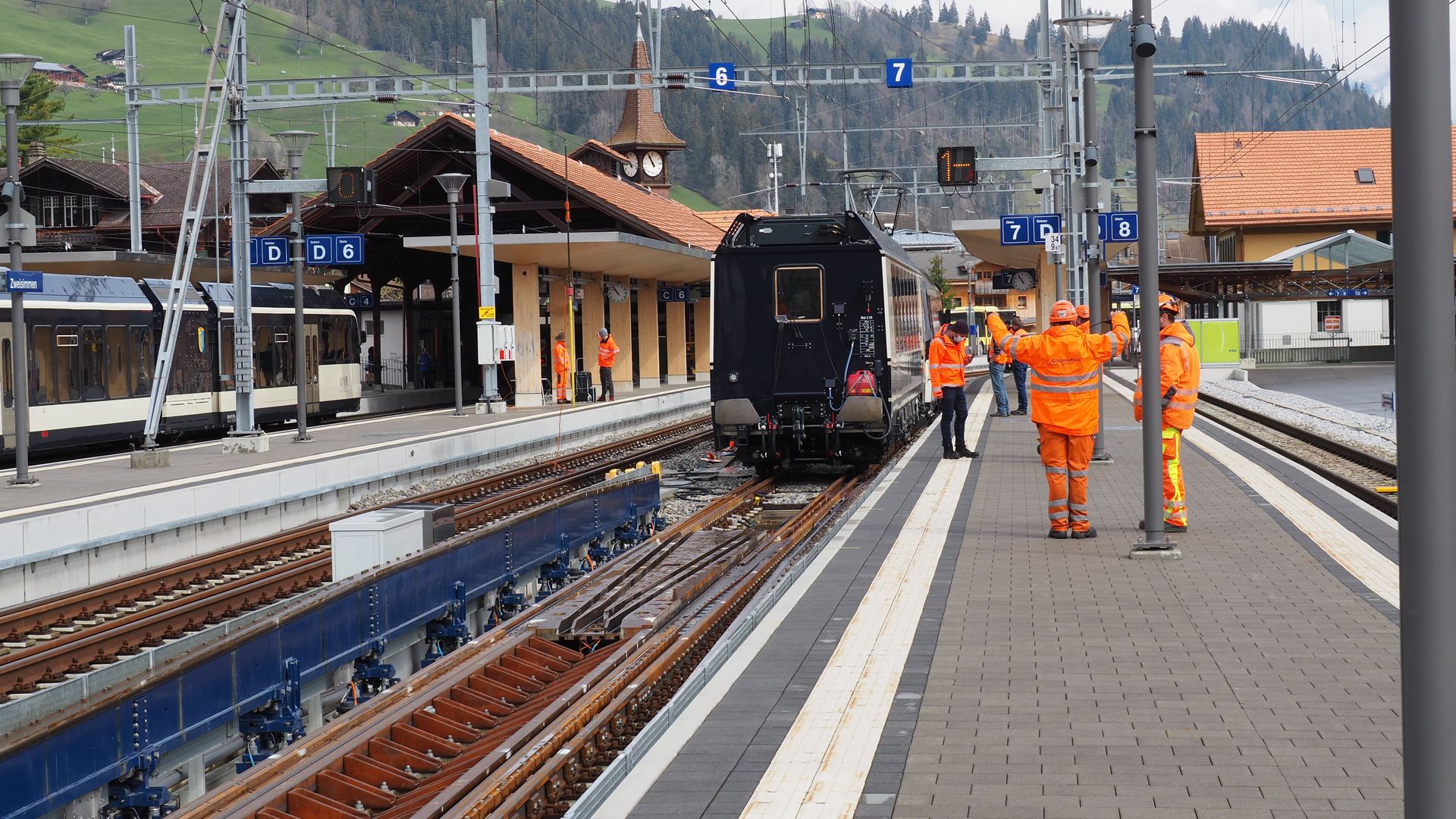Technology
How is it possible to change the train from the metric line to the normal line?
The transition from the metric to standard gauge is achieved through the combination of the variable gauge bogies and the gauge adapting ramp. The main challenge is not only to change the width of the wheels, but also the height of the coach. Additionally, the difference of the electrical voltage of the network requires a change of locomotives.
The Stages
The train departs from Montreux and arrives at Zweisimmen station, the metric gauge part of the journey. Then the train passes over the gauge adapting ramp at a speed of 15 km/h and flaps are raised to allow the coach to position itself. With the weight of the coach relieved from the bogies, their wheel width can extend from 1000 mm to 1435 mm. At the same time, the body is raised from 350 mm to 550 mm to adapt to the platform height.
The change in gauge width and height is not the only challenge to be solved. The electrical voltage is different on the MOB and BLS railway network: 900 VDC on the metric gauge network and 15 kVAC (16.7 Hz) on the standard gauge network. Therefore, the locomotive needs to be changed, furthermore they are not equipped with variable gauge bogies. As a consequence, in Zweisimmen, the MOB locomotive (which pulled the train) hands over the train to the BLS locomotive (which will push the train).
The train can then resume its journey on the standard gauge track towards Interlaken East. The gauge width change takes eight minutes: only a few seconds crossing the ramp, most of the time is required for the change of locomotives and related checks. In Zweisimmen, the gauge adapting ramps are located on tracks 6 (to be installed in autumn 2022) and 7 (complete).
